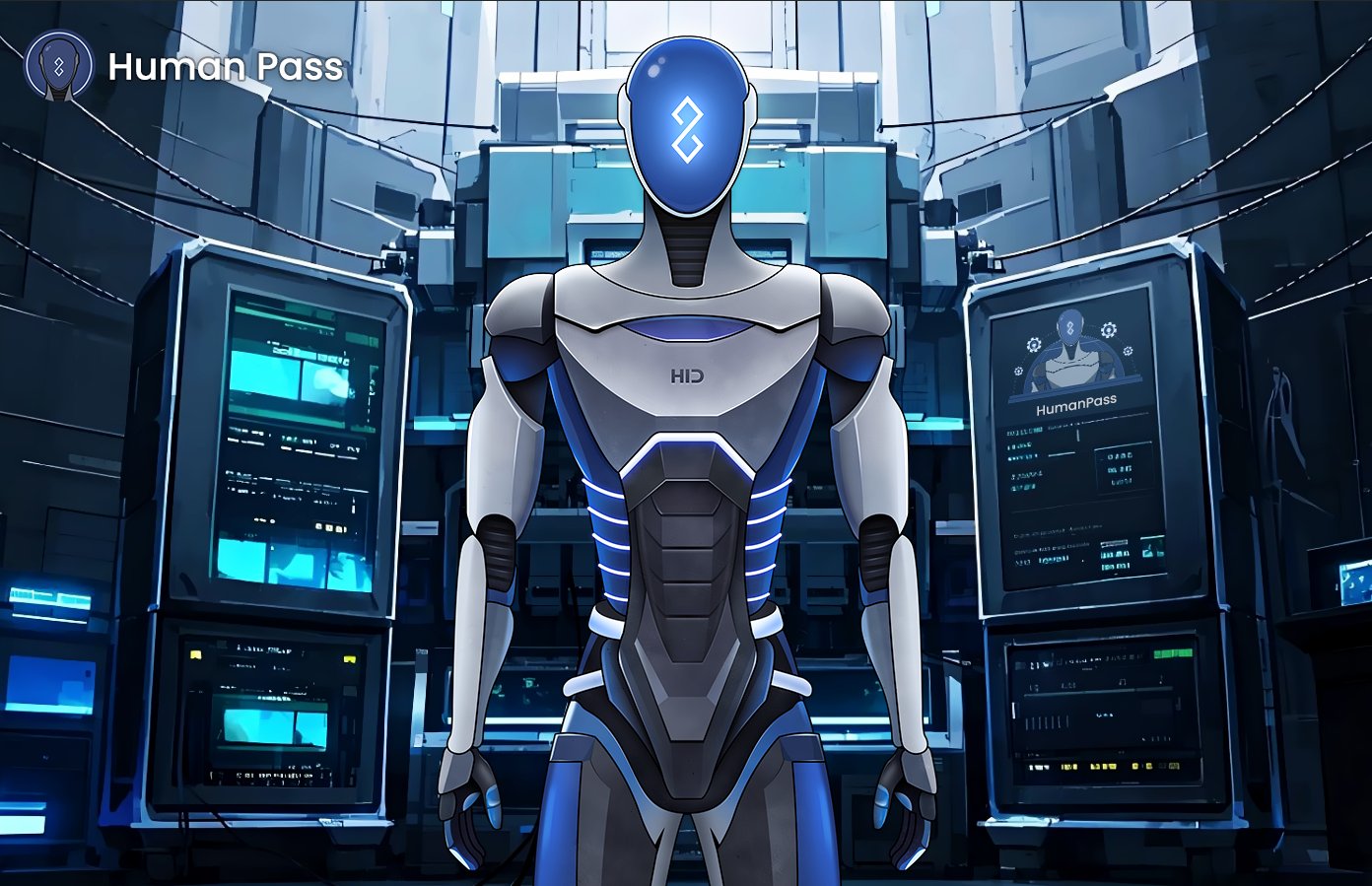Telegram! It's a cloud-based instant messaging app known for its speed, security, and versatility. Telegram offers features like:
1. **Chat and Messaging**:
- Text messages, voice messages, and video messages.
- End-to-end encrypted "Secret Chats."
2. **Media and File Sharing**:
- Share files of up to 2GB in size (as of the latest updates).
- Support for photos, videos, documents, and more.
3. **Groups and Channels**:
- **Groups**: Can host up to 200,000 members, making them great for communities or team collaborations.
- **Channels**: For broadcasting messages to an unlimited audience.
4. **Customization**:
- Themes, stickers, and animated emojis.
- Bots that automate tasks, games, and more.
5. **Cross-Platform Accessibility**:
- Apps for iOS, Android, Windows, macOS, Linux, and web browsers.
6. **Advanced Features**:
- Voice and video calls.
- Scheduled messages and silent messages.
- Polls, quizzes, and reactions.
- Telegram Passport for identity verification.
Telegram is a comprehensive messaging platform designed to cater to personal, professional, and community communication needs. Here's a deeper dive into its features and capabilities:
---
### **1. Core Messaging Features**
- **Text Messaging**: Send messages with advanced formatting options like bold, italic, and monospace.
- **Multimedia Support**: Share photos, videos, GIFs, voice notes, and more.
- **Voice & Video Messages**: Quick, tap-to-record communication options.
---
### **2. Privacy and Security**
- **Secret Chats**:
- Messages are encrypted end-to-end.
- Messages self-destruct after a specified time.
- No forwarding or screenshots (on most devices).
- **Encryption**: Default cloud chats use client-server encryption, while secret chats use end-to-end encryption.
- **Privacy Controls**:
- Hide your phone number.
- Control who can see your online status, profile photo, and last seen.
- Advanced blocking and reporting features.
---
### **3. Groups and Channels**
- **Groups**:
- Up to 200,000 members.
- Roles and permissions for admins.
- Polls, quizzes, and pinned messages for engagement.
- **Channels**:
- Ideal for broadcasting to unlimited subscribers.
- No clutter from comments (unless enabled with discussion groups).
- Analytics for monitoring audience growth and engagement.
---
### **4. Advanced File Sharing**
- File size limit: **2GB per file** (as of recent updates).
- Unlimited storage for shared files in the cloud.
- File types: Supports documents, PDFs, archives, audio, and more.
---
### **5. Bot Integration**
Telegram bots automate tasks, provide information, and enhance interactivity:
- Examples:
- News updates.
- Weather forecasts.
- Games and quizzes.
- API for developers to create custom bots.
---
### **6. Voice and Video Capabilities**
- **Voice Chats**:
- Group voice chats for casual or professional discussions.
- Raise hand and mute/unmute features for organization.
- **Video Chats**:
- One-on-one and group video calls.
- Screen sharing during calls.
---
### **7. Cross-Platform and Sync**
- Access Telegram on multiple devices simultaneously.
- Messages are synced in real time across devices.
- Platforms supported:
- iOS, Android, macOS, Windows, Linux, and web browsers.
---
### **8. Customization**
- **Themes**: Choose from built-in themes or create your own.
- **Stickers and Emojis**:
- Animated and custom stickers.
- User-uploaded sticker packs.
- **Scheduled and Silent Messages**:
- Schedule messages to be sent later.
- Silent messages without notifications.
---
### **9. Unique Features**
- **Username-Based Communication**:
- Chat without sharing your phone number using usernames.
- **People Nearby**: Connect with Telegram users in your vicinity (optional and based on location sharing).
- **Unlimited Cloud Storage**:
- Stores all messages, media, and files.
- **Multi-Pin and Archive**:
- Pin multiple chats for quick access.
- Archive chats to declutter your main screen.
---
### **10. Telegram Passport**
A service to store and securely share personal identification documents with trusted platforms.
---
### **11. Open Platform and API**
- **Open Source Code**: Telegram apps are partially open-source.
- **Telegram API**: Developers can create custom apps and integrations.
- **MTProto Protocol**: A secure and efficient protocol designed for Telegram.
---
### **12. Business Use Cases**
- Build communities and audiences with groups and channels.
- Automate customer support with bots.
- Share large files, announcements, or updates.
---
### **Why People Use Telegram**
- High speed and efficiency.
- Advanced privacy controls.
- Versatility in personal, group, and business contexts.
- Rich ecosystem of bots and integrations.
---
Telegram offers several avenues for monetization, both through channels and bots:
**Monetizing Telegram Channels:**
* **Advertising:**
* **Direct Ads:** Sell ad space within your channel to businesses or individuals who want to reach your audience.
* **Sponsored Posts:** Create sponsored posts promoting products or services relevant to your channel's niche.
* **Affiliate Marketing:**
* **Promote Affiliate Links:** Share affiliate links within your channel and earn commissions on any sales generated through your referrals.
* **Paid Subscriptions:**
* **Premium Content:** Offer exclusive content or features to paying subscribers.
* **Membership Tiers:** Create different membership tiers with varying levels of access and benefits.
* **Sell Digital Products:**
* **E-books, Courses, or Templates:** Directly sell digital products related to your channel's niche.
**Monetizing Telegram Bots:**
* **Develop and Sell Bots:**
* **Create Custom Bots:** Develop bots that offer specific functionalities (e.g., customer service, e-commerce, games) and sell them to businesses or individuals.
* **Monetize Existing Bots:**
* **In-App Purchases:** Offer premium features or virtual goods within your bot that users can purchase.
* **Advertising:** Display ads within your bot's interface.
* **Affiliate Marketing:** Integrate affiliate links within your bot's functionality.
* **Offer Bot Development Services:**
* **Freelance Work:** Provide bot development services to businesses or individuals who need custom bots.
**Key Considerations:**
* **Audience Building:** Building a substantial and engaged audience is crucial for any monetization strategy.
* **Content Quality:** Deliver high-quality and valuable content to attract and retain your audience.
* **Transparency:** Be transparent with your audience about any sponsored content or paid promotions.
* **Compliance:** Adhere to Telegram's terms of service and any relevant regulations.
**Disclaimer:** Monetizing Telegram channels and bots requires effort, dedication, and a deep understanding of your target audience and the platform itself. There are no guarantees of income, and success depends on various factors, including the quality of your content, your audience engagement, and your chosen monetization strategies.
The SEED Coin Bot on Telegram, accessible at [@seed_coin_bot](https://t.me/seed_coin_bot), is a tap-to-earn gaming platform that integrates social interaction with Web3 technology. Within this platform, users engage in a farming game where they plant virtual trees and collect SEED tokens ($SEED). The game is designed to be accessible and enjoyable for both casual users and gaming enthusiasts.
**Key Features:**
- **Tap-to-Earn Gameplay**: Users participate in a farming simulation by planting virtual trees and harvesting SEED tokens. This simple interaction makes it easy for users to earn rewards with minimal time investment.
- **Integration with Telegram**: Operating entirely within the Telegram app, the SEED Coin Bot offers seamless access without the need for additional downloads or installations.
- **Community Engagement**: The platform fosters a community-driven environment, enhancing the gaming experience through social interactions among users.
- **Cryptocurrency Earnings**: By participating in the game, users earn SEED tokens, which can potentially be traded or utilized within the broader cryptocurrency ecosystem.
**Recent Developments:**
In early November 2024, SEED tokens were listed on the OKX Exchange, significantly increasing their exposure and accessibility to a broader audience. This listing has positioned SEED as a noteworthy token in the market, attracting attention from investors and gaming enthusiasts alike.
**Getting Started:**
To begin earning with the SEED Coin Bot:
1. **Access the Bot**: Open Telegram and navigate to [@seed_coin_bot](https://t.me/seed_coin_bot).
2. **Start the Bot**: Click 'Start' to initiate interaction with the bot.
3. **Follow Instructions**: The bot will provide guidance on how to participate in the farming game and start earning SEED tokens.
Hamsterdam is a hyper-realistic 5D startup CEO simulator available as a Telegram bot. In this economic strategy game, players develop their own crypto startups, attract an audience of trusting users (referred to as "hamsters"), and compete with other startups for positions on the leaderboard. The game offers a satirical take on startup culture, blending humor with strategic gameplay.
**Key Features:**
- **Startup Development:** Players create and manage their own crypto startups, allocating resources to various activities to attract and grow their user base.
- **Audience Building:** The goal is to attract "hamsters," representing trusting users, to your project, thereby increasing your startup's value and influence.
- **Resource Management:** Earn resources through gameplay and reinvest them to further develop your startup, simulating real-world economic strategies.
- **Competitive Leaderboard:** Compete with other players for top positions on the leaderboard, with recognition and rewards in TON cryptocurrency.
- **Seasonal Gameplay:** The game features seasons where startups divide resources among themselves, leading to new stages with different challenges and opportunities.
**Getting Started:**
1. **Access the Bot:** Open Telegram and navigate to [@HamsterdamPlayBot](https://t.me/HamsterdamPlayBot).
2. **Start the Bot:** Click 'Start' to begin interacting with the game.
3. **Follow Instructions:** The bot will guide you through setting up your startup and beginning your journey as a virtual CEO.
**Community and Support:**
- **Official Announcement Channel:** Stay updated with the latest news and updates by joining the [Hamsterdam Family](https://t.me/HamsterdamFamily) channel.
- **Community Chat:** Engage with other players, share strategies, and discuss the game in the [Hamsterdam Chat](https://t.me/HamsterdamChat).
TON Kombat is a strategic arena game integrated into Telegram, uniting eight prominent projects from the TON ecosystem. Players select a house, engage in battles, and aim to dominate the leaderboard.
**Key Features:**
- **Diverse Alliances:** Choose from eight houses, each with unique strengths:
- **Attacker:**
- *Hamster Kombat*: Known for lightning-fast speed.
- *Tapswap*: Masters of strategic warfare.
- **Defender:**
- *Notcoin*: Brings great wisdom to the battlefield.
- *Yescoin*: Commands immense wealth and resources.
- **Balance:**
- *Blum*: Wielding mysterious magic.
- *Catizen*: Graceful and adaptable in all scenarios.
- **Lucky:**
- *Dogs*: Unwavering loyalty in battle.
- *SEED*: Harnessing the power of nature.
- **Strategic Gameplay:** Engage in battles requiring tactical decisions, resource management, and alliance coordination.
- **TON Wallet Integration:** Seamlessly connect with TON Wallet for in-game transactions and rewards.
- **Referral Program:** Invite friends to earn $TON, enhancing community engagement.
- **Airdrops and Rewards:** Participate in events offering potential airdrops and exclusive rewards.
**Recent Developments:**
TON Kombat has attracted millions of users through its engaging gameplay and integration with the TON ecosystem.
**Getting Started:**
1. **Access the Bot:** Open Telegram and search for [@Ton_kombat_bot](https://t.me/Ton_kombat_bot).
2. **Start the Game:** Click 'Start' to begin your journey.
3. **Choose a House:** Select an alliance that aligns with your strategic preferences.
4. **Engage in Battles:** Participate in arena battles, develop strategies, and climb the leaderboard.
**Community and Support:**
- **Official Channels:** Stay updated by joining the TON Kombat Telegram channel and following their social media profiles.
Simple Coin is a mini-app on Telegram designed to make earning, managing, and exploring digital currencies straightforward and engaging. By interacting with the bot, users can farm SMPL coins, providing an accessible entry point into the world of cryptocurrencies.
**Key Features:**
- **User-Friendly Interface:** The bot offers a simple tap-to-earn mechanism, allowing users to accumulate SMPL coins effortlessly.
- **Educational Experience:** Ideal for beginners, Simple Coin introduces users to cryptocurrency concepts in an interactive manner.
- **Seamless Integration:** As a Telegram mini-app, it requires no additional downloads, ensuring a smooth user experience.
**Getting Started:**
1. **Access the Bot:** Open Telegram and search for [@Simple_Tap_Bot](https://t.me/Simple_Tap_Bot).
2. **Start the Bot:** Click 'Start' to begin interacting.
3. **Earn SMPL Coins:** Follow the on-screen instructions to start farming SMPL coins through simple taps.
The Yescoin bot is a Telegram-based game that allows users to earn cryptocurrency by simply swiping their fingers on the screen. It operates on the TON blockchain, a relatively new blockchain platform known for its speed and scalability.
**Key Features:**
* **Swipe-to-Earn Mechanism:** The core gameplay revolves around swiping the screen to collect virtual coins.
* **League System:** Players are placed in different leagues based on their performance, with higher leagues offering potentially greater rewards.
* **Daily Rewards:** Users can claim daily rewards to boost their earnings.
* **Referral System:** Players can invite friends to join the game and earn additional rewards based on their referrals' activities.
* **TON Blockchain Integration:** The earned coins are stored and managed on the TON blockchain, allowing users to interact with their digital assets directly within the Telegram environment.
**How to Play:**
1. **Access the Bot:** Search for "@theYescoin_bot" on Telegram and start the bot.
2. **Connect Your Wallet:** Connect a TON wallet (such as Tonkeeper) to the bot to manage your earned coins.
3. **Start Swiping:** Begin swiping the screen to collect coins and advance through the leagues.
4. **Claim Rewards:** Collect daily rewards and bonuses to maximize your earnings.
**Important Considerations:**
* **Virtual Currency:** The coins earned within the bot are cryptocurrency tokens on the TON blockchain, but their value can fluctuate.
* **Time Investment:** Consistent gameplay is often required to earn significant rewards.
* **Potential for Deception:** As with any online platform, exercise caution and be wary of scams or misleading information.
**Overall:**
The Yescoin bot offers a unique and engaging way to earn cryptocurrency while enjoying a casual game within the Telegram environment. It combines the simplicity of a swipe-based game with the potential for real-world value through cryptocurrency integration. However, it's essential to approach this and any similar platforms with a balanced perspective, understanding the potential risks and rewards involved.
**Disclaimer:** This information is for general knowledge and entertainment purposes only. It does not constitute financial, investment, or any other form of advice. Always conduct thorough research and exercise caution before engaging with any online platform or cryptocurrency-related activity.
The BurgerBlastBot is a Telegram-based game that allows users to earn cryptocurrency by participating in various in-game activities.
**Key Features:**
* **Play-to-Earn Mechanism:** Users earn cryptocurrency, typically in the form of the bot's native token, by playing mini-games, completing quests, and engaging with other players.
* **In-Game Economy:** The earned tokens can be used within the bot's ecosystem to upgrade in-game items, purchase exclusive features, or participate in special events.
* **Community Aspect:** Many BurgerBlastBots foster a sense of community by allowing players to interact, compete, and collaborate with each other.
* **Blockchain Integration:** The earned cryptocurrency is often stored and managed on a blockchain, providing users with ownership and control over their digital assets.
**How to Play:**
1. **Access the Bot:** Search for the specific BurgerBlastBot (there may be variations) on Telegram and start the bot.
2. **Connect Your Wallet:** Connect a cryptocurrency wallet (compatible with the blockchain used by the bot) to manage your earnings.
3. **Engage in Gameplay:** Participate in various in-game activities, such as playing mini-games, completing quests, or interacting with other players.
4. **Earn and Manage Tokens:** Earn tokens through gameplay and manage them within your connected wallet.
**Important Considerations:**
* **Virtual Currency:** The cryptocurrency earned within the bot is subject to market fluctuations, and its value can change over time.
* **Time Investment:** Consistent gameplay is often required to earn significant rewards.
* **Potential for Deception:** As with any online platform, exercise caution and be wary of scams or misleading information.
**Overall:**
The BurgerBlastBot offers a unique blend of gaming and cryptocurrency, allowing players to earn rewards while enjoying an interactive experience within the Telegram environment. However, it's crucial to approach this and similar platforms with a balanced perspective, understanding the potential risks and rewards involved.
**Disclaimer:** This information is for general knowledge and entertainment purposes only. It does not constitute financial, investment, or any other form of advice. Always conduct thorough research and exercise caution before engaging with any online platform or cryptocurrency-related activity.
The HumanPass bot is a Telegram bot that facilitates user authentication using behavioral biometrics.
**Key Features:**
* **Behavior-Based Authentication:** Instead of traditional passwords or biometrics like fingerprints, HumanPass analyzes users' typing patterns, mouse movements, and other behavioral cues to verify their identity.
* **Enhanced Security:** This approach offers a more robust security measure compared to traditional methods, as it is harder to replicate someone's unique behavioral patterns.
* **User-Friendly:** The authentication process is typically seamless and unobtrusive for users.
* **Telegram Integration:** The bot leverages the Telegram platform for convenient and secure communication.
**How it Works:**
1. **Enrollment:** Users enroll with the HumanPass bot by interacting with it in a specific way, allowing the bot to learn their unique behavioral patterns.
2. **Authentication:** During authentication, the bot analyzes the user's interactions (e.g., typing speed, keystroke dynamics, mouse movements) and compares them with the previously learned patterns.
3. **Verification:** If the patterns match, the bot verifies the user's identity. If not, it may deny access or request further verification steps.
**Potential Use Cases:**
* **Account Security:** Enhance the security of online accounts by adding an extra layer of behavioral authentication.
* **Two-Factor Authentication (2FA):** Integrate with existing 2FA systems to provide a more robust and user-friendly authentication experience.
* **Fraud Prevention:** Help prevent unauthorized access to accounts and detect fraudulent activities.
**Important Considerations:**
* **Accuracy:** The accuracy of behavioral biometrics can be influenced by factors like user fatigue, distractions, and changes in behavior over time.
* **Privacy:** While behavior-based authentication can be more private than some traditional methods, it's crucial to ensure user data is collected and used responsibly.
**Overall:**
The HumanPass bot demonstrates the potential of behavioral biometrics for enhancing online security. By analyzing user behavior, it offers a more robust and user-friendly alternative to traditional authentication methods. However, it's important to consider the potential limitations and privacy implications associated with this technology.
**Disclaimer:** This information is for general knowledge and informational purposes only. It does not constitute financial, investment, or any other form of advice. Always conduct thorough research and exercise caution when dealing with any online platform or security-related services.
The TapCoins bot is a Telegram bot that allows users to play a tap-to-earn game. Players earn virtual gold coins by completing various tasks, including quizzes, social interactions, and simply tapping the screen. These virtual coins can then be redeemed for real-world rewards.
**Key Features:**
* **Tap-to-Earn Mechanics:** The core gameplay involves tapping the screen repeatedly to accumulate virtual gold coins.
* **Daily Bounties:** Players can claim daily bounty cards and use lucky codes to enhance their earnings and gameplay experience.
* **Quizzes and Social Tasks:** Engaging in quizzes and completing social tasks can also reward players with virtual coins.
* **Reward Redemption:** Once players accumulate enough virtual coins, they can redeem them for real-world rewards through various methods.
**Disclaimer:**
* **Potential Risks:** As with any app that offers rewards, it's essential to research and understand the terms of service and any potential risks associated with using the TapCoins app bot.
* **Evolving Nature:** The specific features and functionalities of the TapCoins app bot may change over time.
**To find the most up-to-date information:**
* **Check the Official Channels:** Look for official announcements and instructions on the TapCoins Telegram channel or other official communication platforms.
* **Consult Online Reviews:** Research the TapCoins app bot on reputable online platforms and forums to gather user experiences and insights.
**Remember:** Proceed with caution and conduct thorough research before engaging with any app that involves earning rewards or exchanging virtual currency.
The Zoo Story Telegram bot is part of an airdrop campaign for the $ZOO token, built on the TON blockchain.
**Key Features**
* **Game-Based Airdrop:** Users participate in a virtual zoo management game where they acquire animals, upgrade enclosures, and earn $ZOO tokens.
* **Community Building:** The bot encourages community interaction through features like alliances and shared tasks.
* **Potential Rewards:** Successful participation in the game can potentially reward users with $ZOO tokens.
**Disclaimer**
* **Airdrop Risks:** As with any airdrop, there's inherent risk involved. Thorough research is crucial before participating.
* **Evolving Nature:** The specific features and functionalities of the bot might change over time.
**Finding More Information**
* **Official Channels:** Check the official Telegram channels and announcements for the latest updates and instructions.
* **Reliable Crypto Resources:** Research the $ZOO token and the airdrop on reputable cryptocurrency news sites and forums.
**Remember**
Proceed with caution and conduct thorough research before engaging in any cryptocurrency-related activities, including airdrops.

















